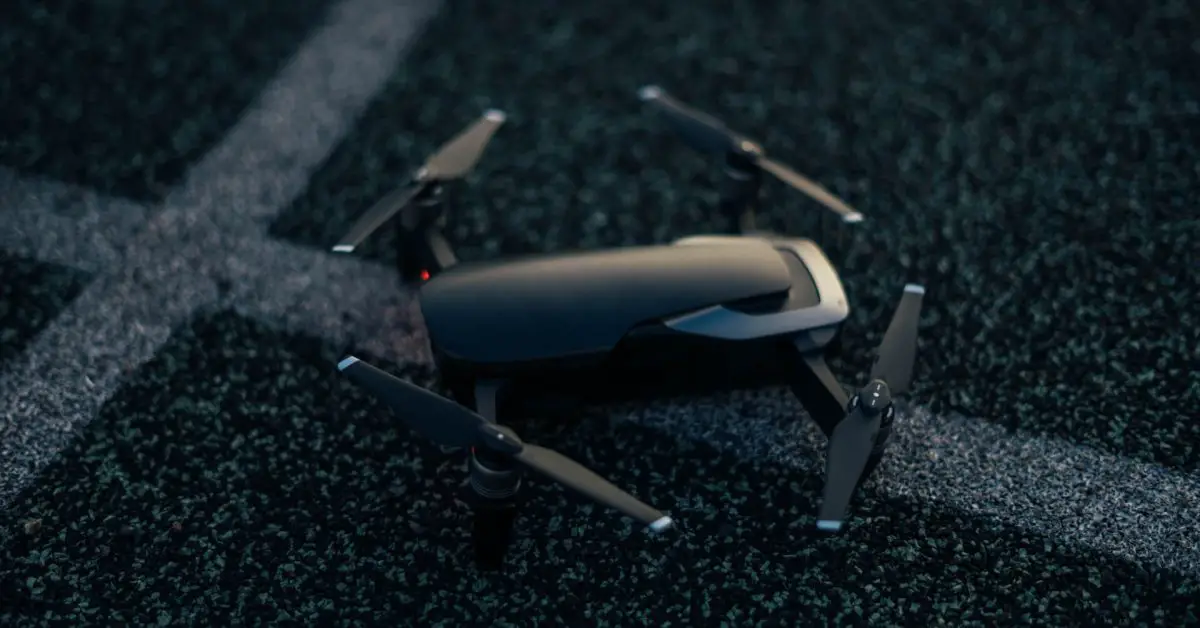Drones have taken the world by storm finding uses in various industries such as agriculture, science and photography. Understanding this technology and learning the parts that make it up can prevent us from falling behind the times and even enable us to build our very own unmanned aerial vehicle (UAV).
Today we’re going to dive into some basic drone anatomy. This brings us to the question, what are consumer drones made of?
Drones are mostly made of magnesium alloy, aluminum alloy, titanium, carbon fiber or thermoplastics such as polyester, nylon and polystyrene. Most drones have combinations of these materials used on different parts of the drone to maximise overall performance. One such example is the DJI Inspire 2 with it’s magnesium-aluminum body and carbon fiber arms.
If you’re not quite sure what an alloy is, here is a short explanation below.
What Is An Alloy?
An alloy is a combination/mixture of one or more elements. Mixing several metals can create an even stronger and more durable metal.
Alloys are used in a wide variety of applications, from the steel alloys, used in everything from buildings to automobiles to surgical tools, to exotic titanium alloys used in the aerospace industry, to beryllium-copper alloys for non-sparking tools.
Wikipedia
Combining metals can lead to many advantages such as increasing the material’s resistance to corrosion and increasing it’s mechanical strength. It can also decrease the cost of production of the material without losing it’s valuable properties.
Here is a link to the Wikipedia page on alloys which goes into much more detail if you’d like to learn more: Alloy – Wikipedia
What Are Drones?
Drones are unmanned aircrafts that are used in the photography, agriculture and even energy industries. They are used by recreational/hobby drone pilots and commercial drone operators.
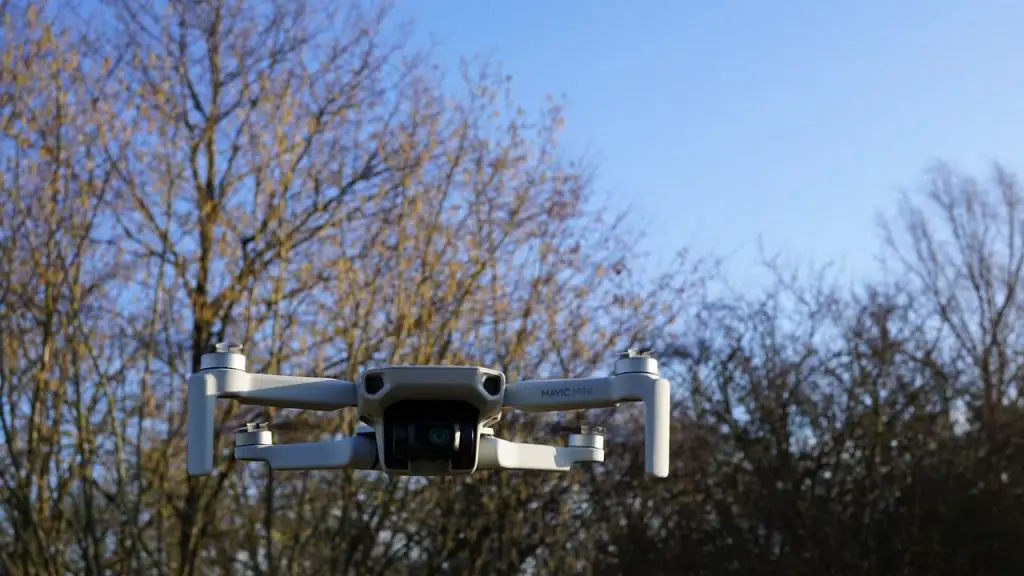
These drones are also commonly referred to as unmanned aerial vehicles (UAVs), but have other terms such as unmanned aerial systems (UAS), which is more commonly used for military drones, or simply unmanned aircraft (UA).
Unmanned aerial systems are made up of several parts/components which allow it to operate. Choosing the right materials for each component is essential for the drone to operate correctly and efficiently.
Let’s find out what some of these parts are and what materials are most commonly used for them!
What Are The Components Of A Drone? [And Their Materials]
Drones are not the most complex devices, yet may not be the simplest to understand either. There are several parts to a drone that each have their different functions and in most cases, different materials as well.
Each drone is built somewhat differently and each component must be chosen with density in mind in order to optimise the weight of the unmanned aerial vehicle (UAV) and in turn boost it’s overall performance.
Most drones are built with specific intentions in mind, whether that be for speed, flight duration, durability or stability.
Understanding a drone’s components can get you one step closer to building, maintaining or simply buying the perfect drone.
While some UAVs may have more parts than mentioned below, and some may have less, most drones are equipped with the following components.
Here are the main parts of a consumer drone:
- The Frame
- Flight Controller
- Motors
- Propellers
- Batteries
- GPS Module
- Electronic Speed Controller (ESC)
- LED Lights
- Power Distribution Board
- 3 Axis Gimbal
- Camera
- Transmitter
- Receiver
Drone Frame
The drone frame is one of the most important parts that make up a drone. In most drones, it keeps everything together such as the propellers, motors, battery, boards and even the camera.
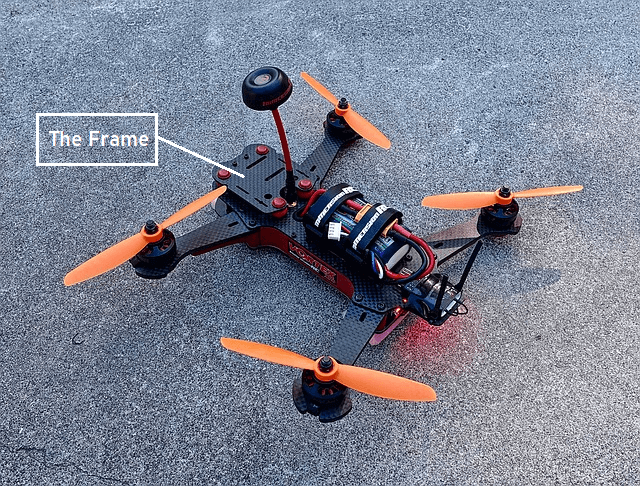
This is a vital component of any drone and that is why using a strong and lightweight material is essential.
The frame usually comes in several pieces. These pieces are then stacked together to ‘sandwich’ the mentioned components and in turn protect them.
The amount of parts that are protected will depend on the shape of the drone. In the racing drone shown in the picture above, the battery is not shielded.
The frame is responsible for holding the motors and propellers of the drone at the end of each arm. The amount of arms can vary depending on which kind of drone it is (tricopter, quadcopter, hexacopter or octocopter).
Near the center of the drone’s frame you should be able to find the rest of the components such as the power distribution board, flight controller and electronic speed controller (ESC).
So what are drone frames made of?
Most of todays drone frames are made from magnesium alloy (DJI Phantom and DJI Mavic), plastic (DJI Flamewheel) or carbon fiber (Most FPV racing drones).
We’ll get into why many drone industry leaders and drone enthusiasts are building their drones using carbon fiber parts later in this article.
Flight Controller
The drone flight controller is the motherboard of a drone. It controls every instruction given by the drone pilot to the drone. It regulates motor speeds through the electronic speed controller (ESC) and steers the drone itself. It also interprets all input from things such as the battery monitor, onboard sensors and the receiver.
Any of the drone’s autonomous functions such as the autopilot feature are controlled through the flight controller.
If a drone is caught in some heavy winds, it can still stay in place by using the onboard sensors and GPS module to determine where it’s exact position is and how much it needs to compensate to remain in the same location. It will compensate by controlling the ESC and in turn the motors to adjust.
Motors
A drone’s motors are what allow propellers to spin so that the drone can take off and move. Each arm of the drone has it’s own motor.
The way you are going to use your drone influences the type of motor you should get.
If the drone is going to be used to carry heavy payloads, then a motor that has a high torque and therefore spins slower is better. These motors will generally lead to longer battery life. These drones typically have RPMs of between 300-900kv.
If the drone is going to be primarily used for applications that require a faster drone with more maneuverability, then a motor with low torque that spins much faster is better. These motors will lead to shorter flight times and typically have RPMs of around 1400kv.
These results may vary depending on the battery and propellers used for the drone.
Most drones being manufactured today use brushless motors. These motors are considered to be more efficient that brushed motors. They can lead to longer flight times, less noise produced from the drone and cheaper drones in general.
Propellers
Propellers are a very important part of any drones. They allow a drone to hover and fly around.
In multicopter drones, propellers are connected individually to motors. These motors are then controlled by an Electronic Speed Controller (ESC) which regulates how fast each motor rotates. By varying the speed of rotation of individual motors, the ESC is able to help drones maneuver in several possible ways.
3D Insider
Having spare sets of propellers is essential when using a drone. They break all the time!
There are several types of propellers you can buy for your drone if you’re not satisfied with the stock propellers.
The two are tapered tip propellers and bullnose tip propellers.
Tapered tip propellers have pointed tips at the end which reduces the torque required to rotate due to less resistance. This causes the drone to generate less lift and use more battery power leading to shorter flight times.
These propellers are the preferred choice as they are more efficient than the second option. They are more suited to smaller drones that are aiming for speed and maneuverability.
Bullnose tip propellers have more blunted tips which increases torque generating more lift and longer flight times. These propellers are ideal for drones primarily carrying heavy payloads.
Carbon fiber vs plastic propeller
There are two differences between carbon fiber propellers and plastic propellers. These differences revolve around cost and performance.
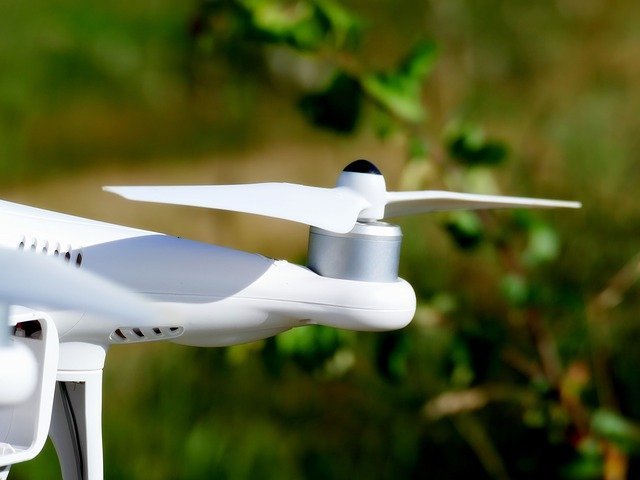
Carbon fiber propellers are more efficient and more often found on the stock version of more expensive drones. These propellers are of higher quality and are much more resistant to damage of any kind. They are also still very lightweight.
This means you would have to replace your propellers a lot less than with plastic propellers.
However, they are a lot more expensive. They can cost $40 per set!
Plastic propellers are much lower quality and emit much more noise while flying the drone. These are the kinds of propellers you may find on many cheaper drones. They are much cheaper (around $20/set).
Choosing between the two is completely up to you and your style of flying. If you are just starting out, then you may want to choose plastic propellers to have more flexibility and therefore less stress.
Just keep in mind that drone frames require specific propeller sizes, so checking before purchasing new propellers is a must!
How often do you need to buy new sets of propellers?
Batteries
The battery is what powers the entire drone. Different batteries are used for different drones as each drone has different requirements.
A small drone will only require a small battery as it’s a lot lighter. A larger drone may require a battery that’s bigger as it requires more power.
Using a battery that’s too heavy for the drone will use more energy and therefore reduce the drone’s flight time.
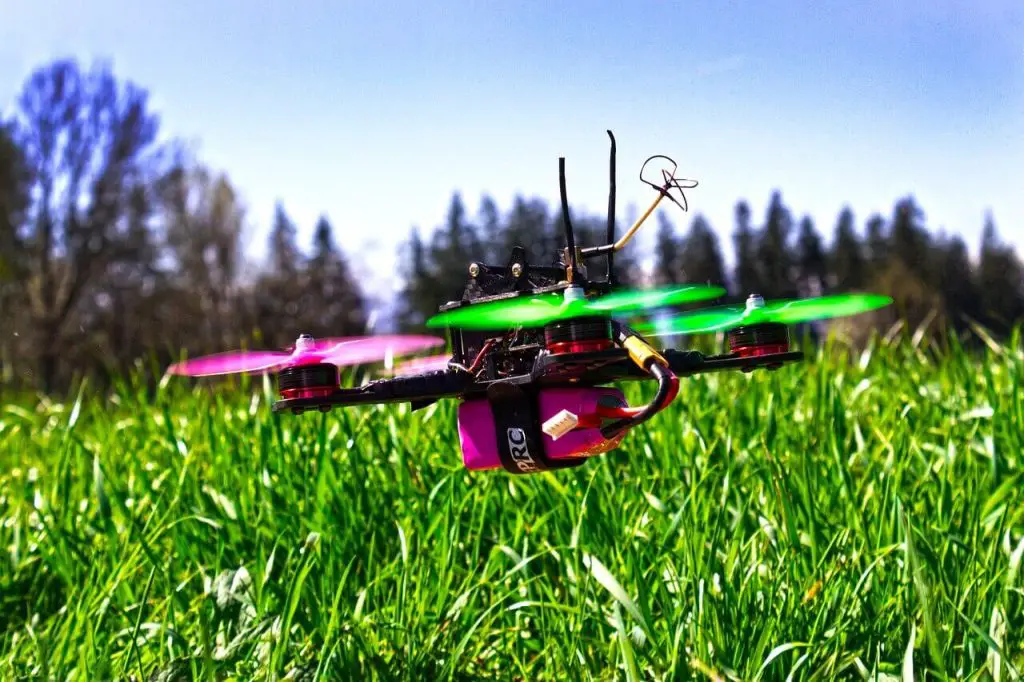
Finding the right balance between battery size, battery power and drone size is essential for an efficient drone.
With advancements in technology, the newer lithium polymer (LiPo) batteries were created which are batteries capable of storing a lot of power while still remaining lightweight and efficient.
Each drone has a battery monitor which relays important information to the operator. By this we mean information such as the overall performance of the battery and how much battery life it has left before it needs to be charged.
These batteries are also capable of communicating temperature data, history of charge cycles and providing over-charge protection.
GPS Module
The global positioning satellite (GPS) module finds the exact location of a drone (longitude, latitude and elevation points).
It uses two global positioning systems, one of which is the Russian network which is called Globalnaya Navigazionnaya Sputnikovaya Sistema (GLONASS) and the other is the United States network.
GLONASS has 24 satellites orbiting the Earth and the United States network has 31 satellites.
Each of these satellites send information on their location back to Earth and to the drone. The drone reads this information and calculates it’s position (geolocation) depending on the amount of time it took for the information sent by the different satellites to reach the drone.
The GPS module has made it possible for features such as automatically returning your drone home without your control
This allows the drone to determine it’s exact location on Earth.
Electronic Speed Controller (ESC)
The electronic speed controller is an electric circuit responsible for monitoring and changing the speed of the drone, changing the direction of flight, and even converting the DC battery power into AC battery power in order for the motors to function.
ESCs are vital for the UAV to function with the best performance possible. These little boards are found in almost every UAV.
Industry leaders such as DJI are constantly developing new ESCs to improve their efficiency by reducing power consumption and improving overall performance.
LED Lights
Their are two main kinds of LED lights found on drones. One being Navigation lights, and the other anti-collision lights.
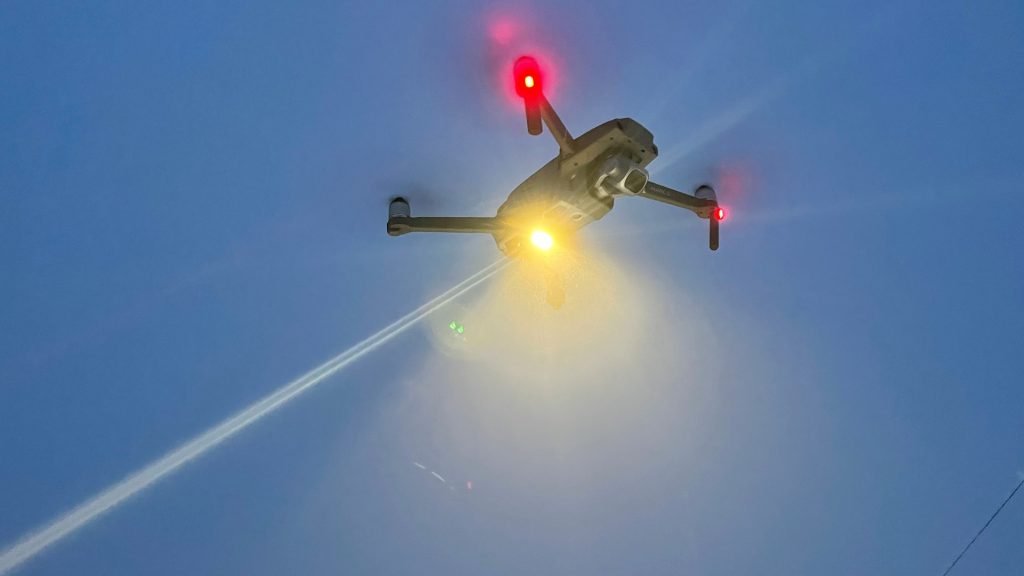
The two main differences between the two is that navigation lights are not very bright and do not blink or strobe whereas anti-collission lights are much brighter and blink or strobe depending on the users preference.
Related Post: How To Spot A Drone At Night – Everything You Need To Know
Power Distribution Board
The power distribution board monitors the amount of power that is given from the battery and distributes this power to the drone’s electronic speed controller (ESC) and flight controller.
Gimbal
Not all drones have gimbals, but we thought it would be worth mentioning due to the improvement in quality of drone footage when you use one.
There are two types of gimbals, 2 axis gimbals and 3 axis gimbals.
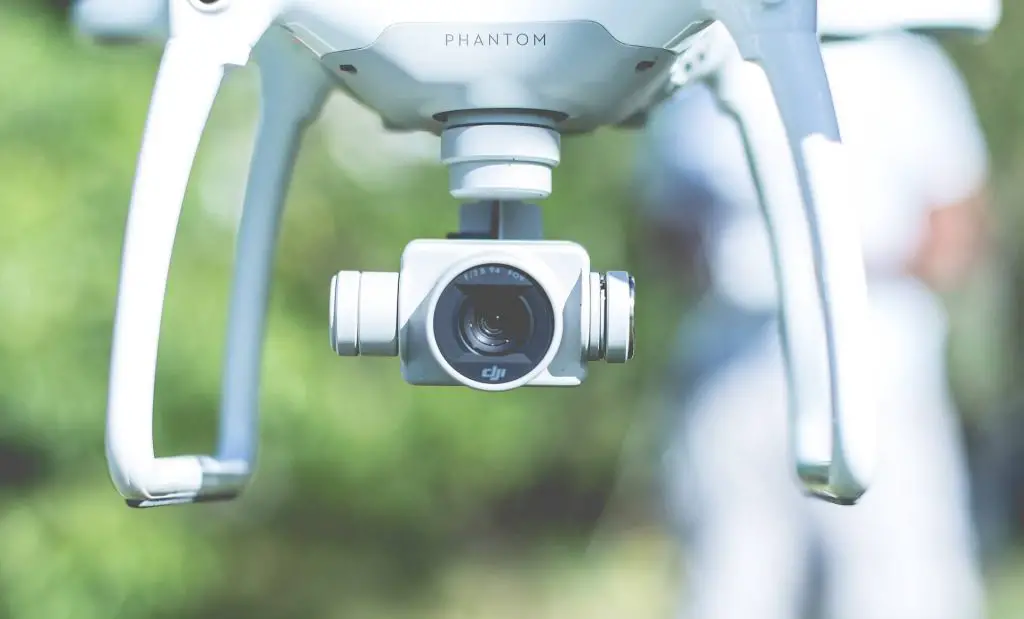
Buying the right gimbal for your drone is very important as having one that’s not well balanced in terms of weight can force your drone to use a lot more energy than it should to counteract this shift in weight and stay stable.
Here is a really helpful post that goes into detail on what a gimbal is and the differences between the two different kinds of gimbals: Drone Gimbals Explained: How They Work – Drone Tech Planet
Camera
Cameras are obviously used to capture footage while flying a drone. Many drones on the market come with cameras built inside the drone while others come with detachable cameras.
You can find many different kinds of cameras with all sorts of shapes and sizes, just make sure it’s compatible with your drone’s camera mount.
Transmitter
The transmitter transmits radio signals from the drone’s controller to the drone itself so that the drone’s operator can control the drone.
It needs to have 4 channels but having 5 is better.
Receiver
The receiver receives these radio waves from the transmitter and is found in the drone.
Once again, it needs 4 channels but 5 is better.
Why Most Drones Use Carbon Fiber
Today, most drones have some kind of component that uses carbon fiber whether that be for it’s frame or it’s propellers. This is because carbon fiber is very strong and lightweight.
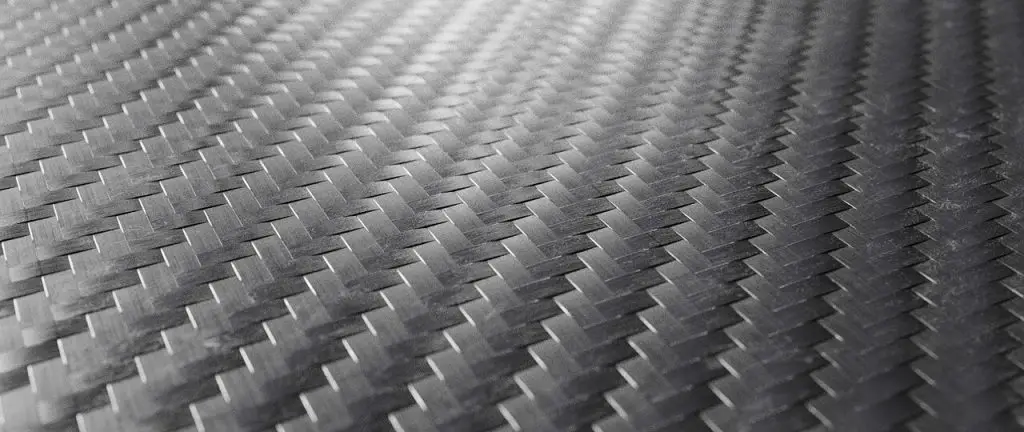
Drones are being built with the goal of being as efficient as possible. One such way efficiency is achieved is by making the drone lightweight thereby reducing weight and increasing battery life.
Take note that carbon fiber is often referred to as Carbon-fiber-reinforced polymers (CFRP) when mixed with plastic resin, carbon composite or just carbon.
Carbon fiber has little to no thermal expansion. Thermal expansion occurs when a material/element is subjected to heat or cold and expands or shrinks.
This can weaken and deform even steel but has little to no effect on carbon fiber due to the epoxy resin found in carbon fiber which reduces it’s heat conductivity.
Here is a link to the Wikipedia page on carbon fiber if you’d like to learn more: Carbon fibers – Wikipedia
Some Examples Of Popular Drones And Their Materials
Here is a small graph of just a few popular drones and the materials used for their bodies:
| Drone Model | Drone Body |
| DJI Inspire 2 | Magnesium-aluminum + carbon fiber arms |
| DJI Phantom 4 | Magnesium |
| DJI Mavic Pro | Aluminum + plastic |
| Parrot Anafi | Plastic + carbon fiber |
| Hubsan Zino | Polycarbonate |
Conclusion
Industry leaders and DIY drone builders are constantly experimenting to create the perfect drone built with the best most durable lightweight materials.
Drones are usually made of multiple materials as some materials are better suited for different parts of a drone.
Technology will continue to improve reducing the weight of a drone while increasing it’s flight time and speed.
